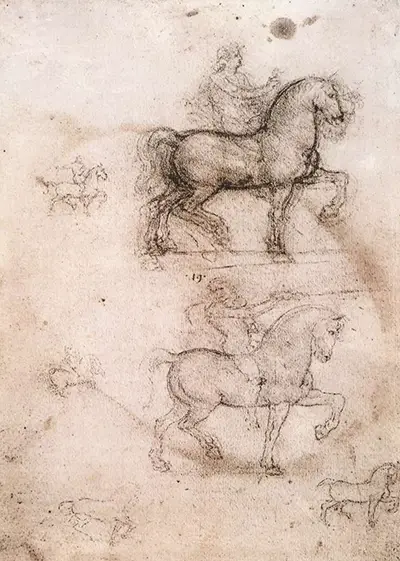This is because Leonardo never fully realised his dream of creating the world’s largest equine monument as he was commissioned to do so by the Duke of Milan, Ludovico il Moro.
The statue was intended to be a monument to the Duke’s late father but despite extensive preparatory work completed by Leonardo the project never came to fruition.
Leonardo did manage to complete a clay version of his statue over a 17 year period in which he also worked on some of his most famous projects, including The Last Supper.
This epic 24-foot equestrian monument stood in a vineyard near the duke’s castle. Leonardo always intended to cast his statue in bronze to ensure it was immortalised forever, he wrote in his notebooks of his revolutionary method to accomplish this.
Sadly, though his dreams were dashed by invading French soldiers who captured Milan and used the great monument for target practice, destroying it completely. Legend has it that Leonardo mourned the loss of his horse up until his death.
Luckily for the modern world though, Leonardo left behind many detailed notes and images of his horse in his famous notebooks. There was enough information in the documents to allow airline pilot, Charles C. Dent to begin work on financing completion of the project.
Nina Akumu was eventually brought in as a successful animal sculptor to complete the project. It was difficult to piece together an exact replica of Leonardo’s previous creation from his notes but Dent felt it was important to produce a sensitive monument to the genius of Da Vinci and so Akumu worked with Leonardo’s notes and her own studies of horse breeds to create a new monument.
The 24-foot bronze equestrian monument was unveiled on September 10, 1999, 500 years after Da Vinci’s clay effort was destroyed by the French soldiers.
The spectacular monument now stands on a white marble pedestal in Milan, where it always should have been. It is felt that there is significant meaning behind the gifting of this horse from a project run by American nationals to Italy, the idea being that it stands as a symbol of friendship between nations.
It also serves, given the history of the project, as a reminder of the destructiveness of war and our ability to overcome such waste if we work together.
A second monument was also made and this was presented to the Meijer Gardens, in Michigan, in the United States in recognition of the financial contribution from Frederik Meijer to the project. The second version of the statue is often referred to as ‘the American horse’.


